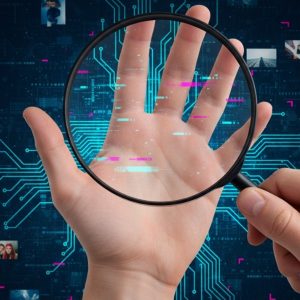Last updated on November 17, 2025

AI can now create photos that look extremely real, from people who don’t exist to events that never happened.
These AI images can be used for scams, disinformation, propaganda and impersonation.
So how do you protect yourself?
Here are 6 simple ways to detect fake / AI generated images:
1. Use Your Brain
If the image feels “too perfect” or you feel something is off… trust that feeling.
Your brain is better than you think at spotting unnatural details.
If the image triggers a “wait… something is weird” reaction pause and analyze.
2. Look at the Hands
AI still struggles with hands.
Common signs:
- extra fingers
- missing fingers
- melted shapes
- weird bending
- nails growing in wrong directions
If the hand looks awkward, it’s likely AI.
3. Look at the Eyes
Eyes often reveal the fake.
Check for:
- uneven reflections
- unnatural symmetry
- strange lighting
- pupils pointing in different directions
- eyes glowing too much
Real eyes reflect light consistently. AI often fails here.
4. Check Proportions
AI sometimes mixes objects, body parts and backgrounds incorrectly.
Look for:
- oversized heads
- small shoulders
- neck too thin or too long
- weird hair blending into background
- objects floating or merging into hands
If the proportions feel wrong. be suspicious.
5. Look at the Text
AI can’t handle text well inside images.
Signs:
- spelling mistakes
- random letters
- warped fonts
- text that changes style halfway
Street signs, newspapers, and product labels are usually a giveaway.
6. Watch for Perfection
Real photos have flaws.
AI loves perfection:
- perfect skin
- no pores
- perfectly smooth hair
- no shadows where shadows SHOULD be
- “Studio quality” lighting in places like street photos
Real humans have imperfections. AI often removes them.
Use AI Detection Tools
If you’re unsure about an image, you can also use AI detection tools to verify it.
Free tools like AI or Not, Illuminarty, Hugging Face AI Image Detector, or Google Lens can help you check whether an image was likely created by AI or has appeared elsewhere online.
These tools aren’t perfect, but they can give helpful clues — especially when combined with your own careful observation.
Never trust an image or video instantly.
References:
https://www.mcgill.ca/oss/article/critical-thinking-technology/how-spot-ai-fakes-now

